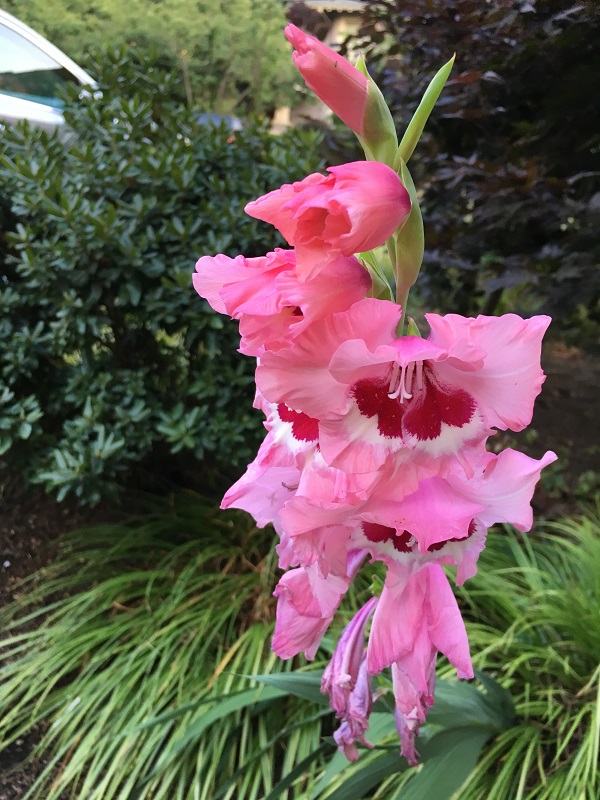Well, March is behind us. We had only 36% of the normal month of March rainfall, here in the Seattle area: 1.37 in. vs the average of 3.72 in.
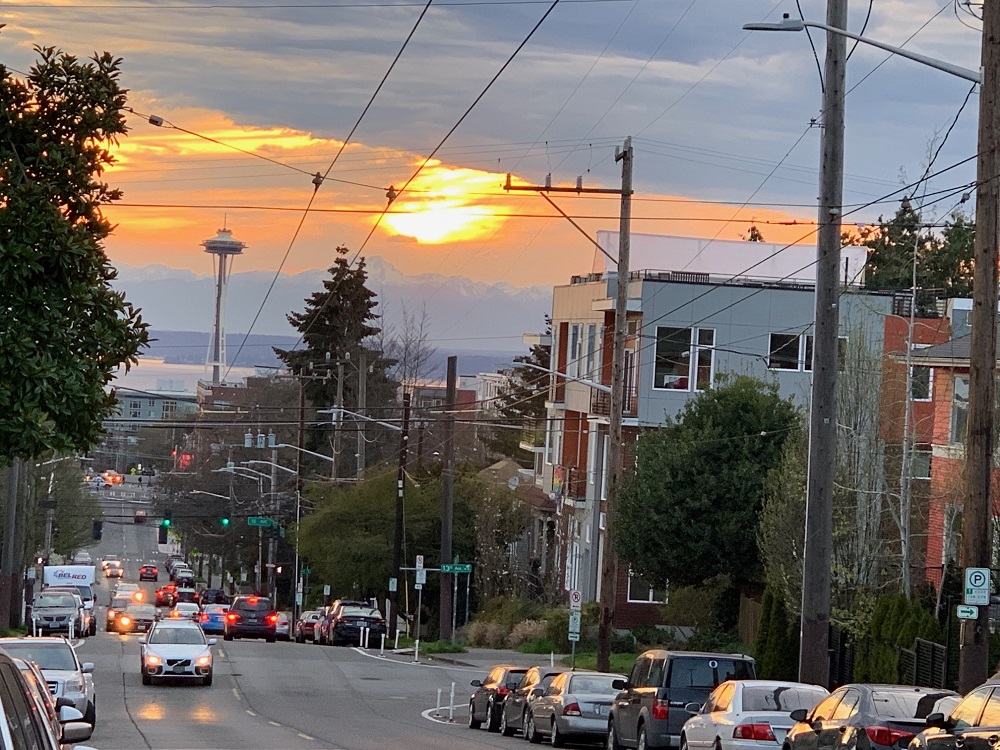
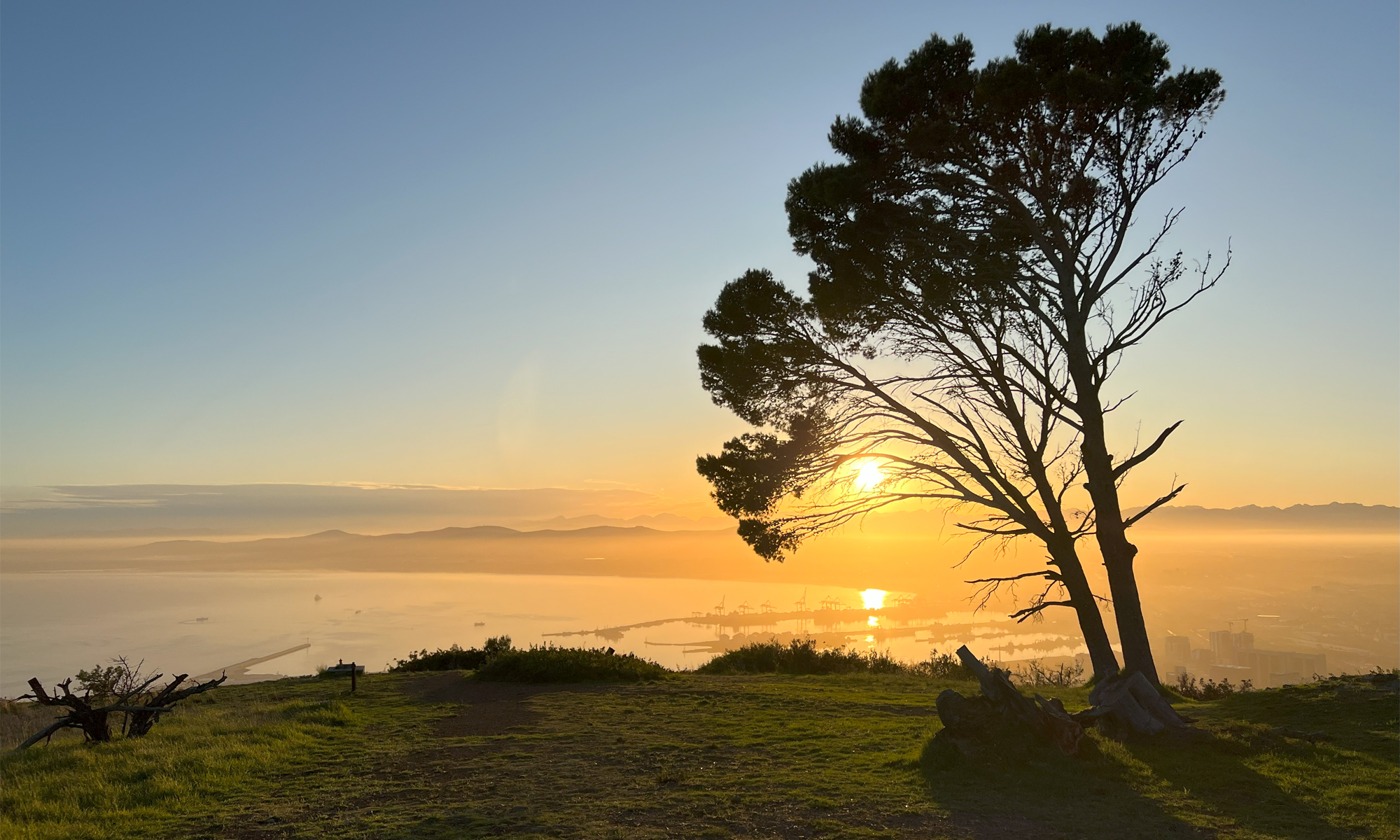
a weblog of whereabouts & interests, since 2010
Well, March is behind us. We had only 36% of the normal month of March rainfall, here in the Seattle area: 1.37 in. vs the average of 3.72 in.

We finally have some warmer weather on the way, and the weatherman says we should get to 65°F /18°C by Monday.
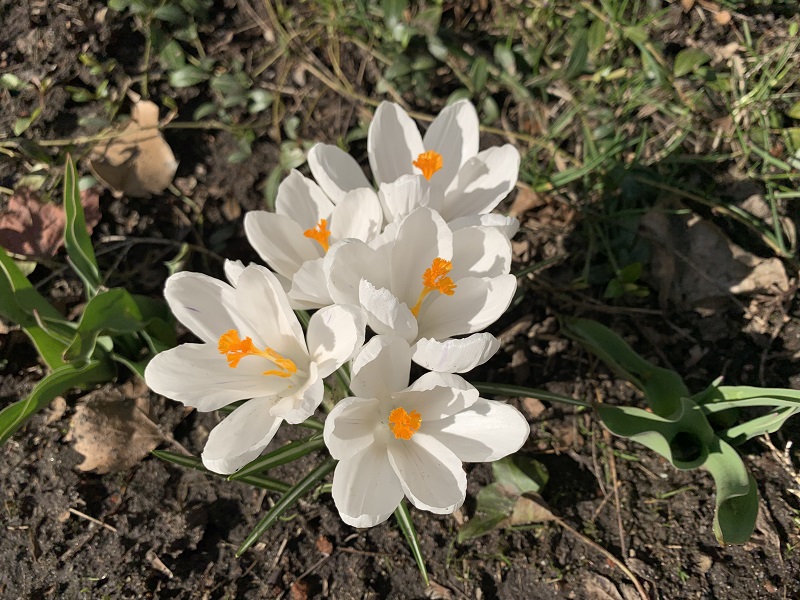
We had completely blue skies here in Seattle on Sunday and Monday. A superdry air mass is just sitting over the area.
With no cloud blanket, it gets really cold at night. A record low of 16° F (−9°C) for Mar 4 was measured in Olympia this morning.

Here is Table Mountain, basking under blue skies on a beautiful summer day, seen from the Victoria & Alfred Waterfront in Cape Town.
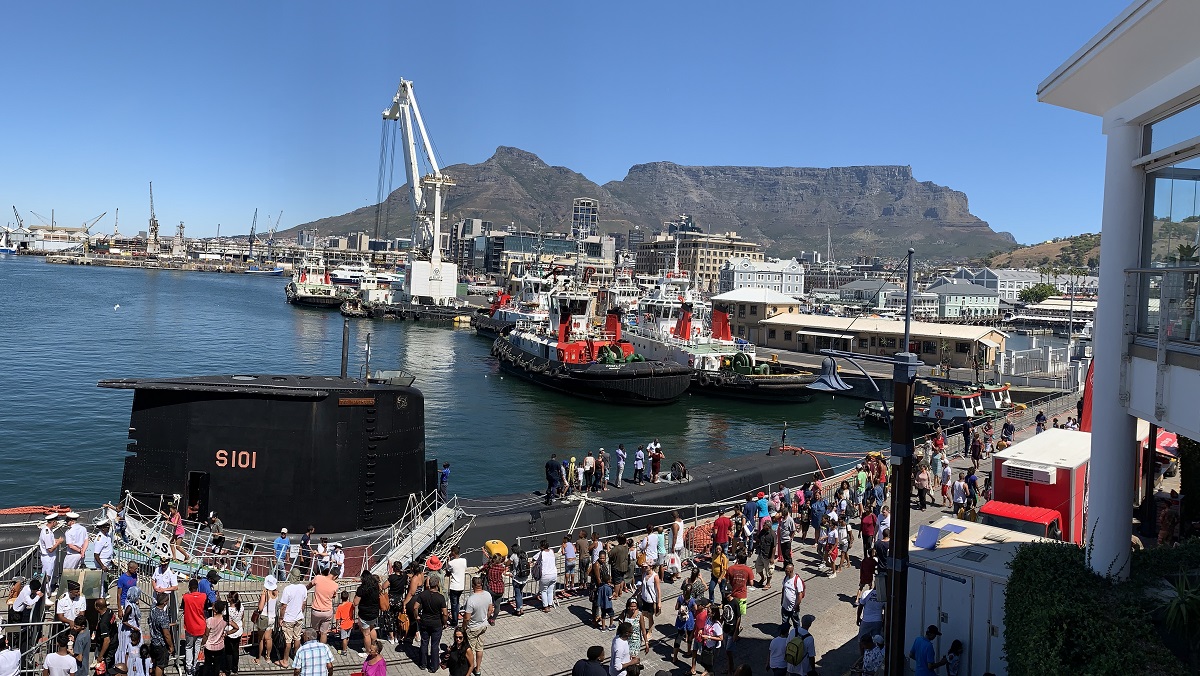
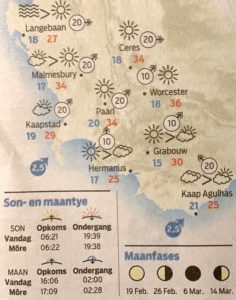
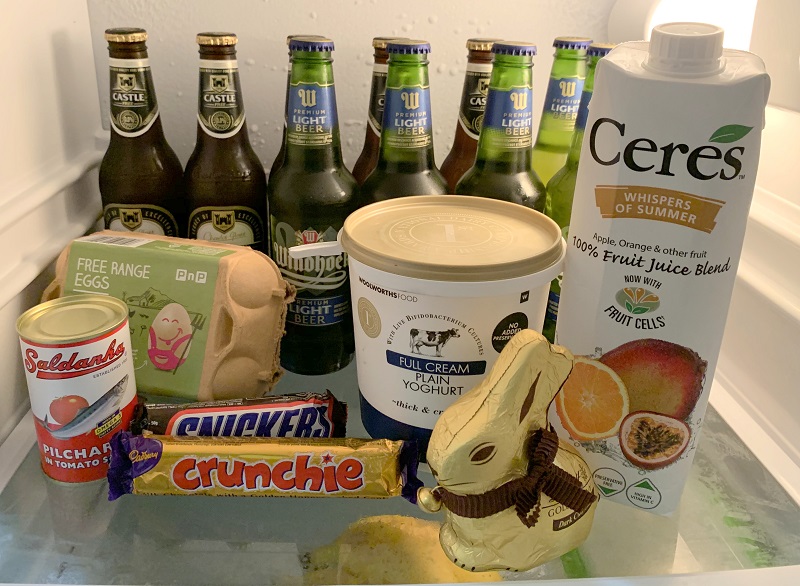
The weather was much cooler today.
There were no power outages, and tonight a lucky South African may win the largest local lottery jackpot ever: R 210 million/ US $14 m*.
I have beer in my fridge, and some of my favorite South African snackies, so life is good.
*A fraction of the obscene amounts offered in United States lotteries – but drawing 5% each year of US$ 14 m comes to $700,000. Plenty to live a lavish life, anywhere in the world.
It was a scorcher here today in the northern suburbs of Cape Town.
My little rental car’s dashboard gauge hit 39.5°C/ 103°F at one point!
There is no water supply crisis in Cape Town the way there was just a year ago (dam levels at 57% vs 25% a year ago). Even so: I try to use water sparingly. As someone said: the best time to save money, electricity, water, is when you still have plenty.
P.S. Check out the cool safari animals that I found today on Eversdal Road in Durbanville. They advertise artificial turf. I think the rhinoceros will make quite a statement, if I were to install one in my front yard in Seattle!
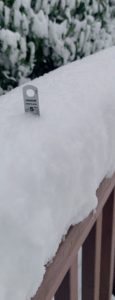
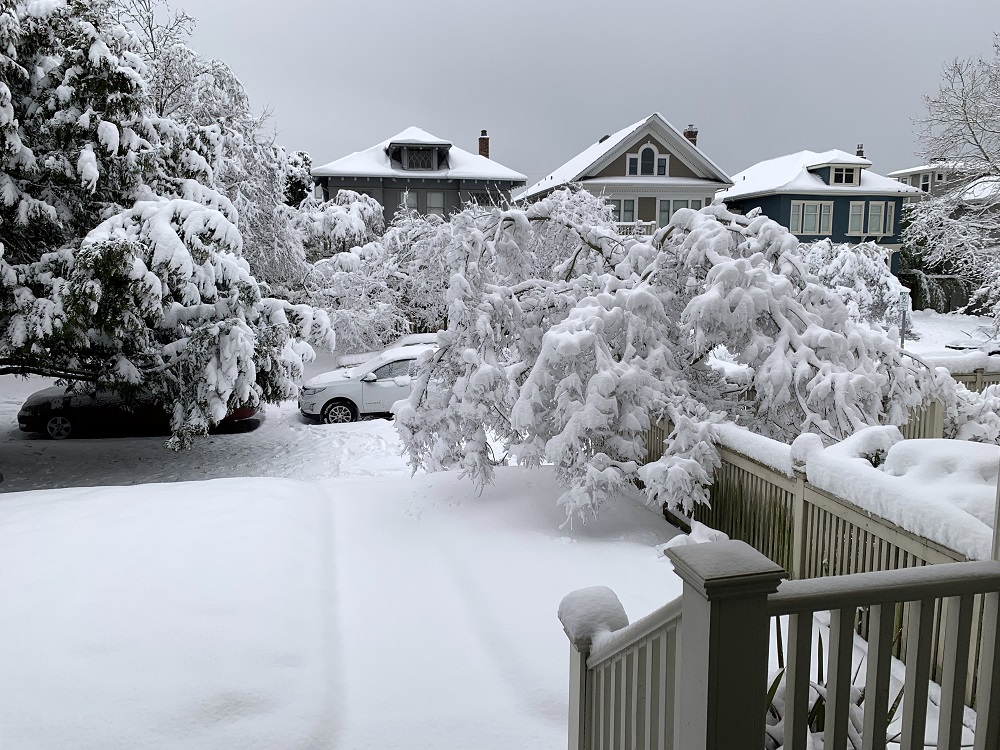
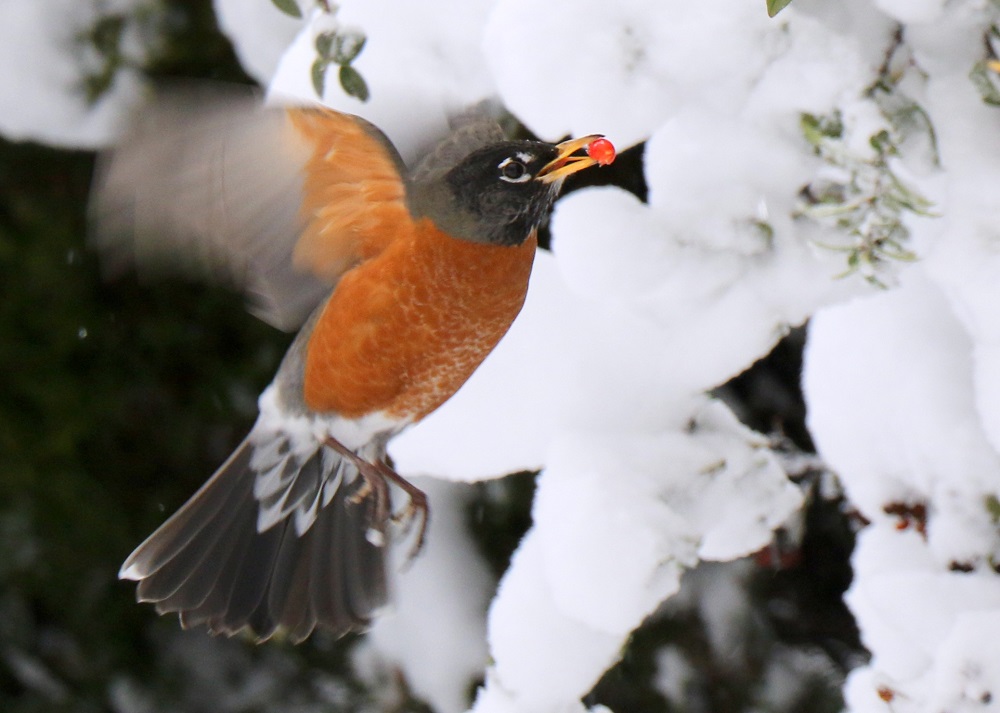
Well, we are at 6 inches here in the city, says my unofficial snow meter (the railing alongside the deck at the back of the house).
It is great to be in a warm and cosy house, and to be able to just watch the local TV station’s coverage of the conditions outside, and of the streets. I did venture out on foot mid-morning, to take the obligatory few pictures of the snowy street corners in my neighborhood.
We had another round of snow this afternoon (almost 3 inches), with more expected overnight.
Then there will be a break on Sunday, before the snowfalls resume on Sunday night. That’s good news for my travel plans, since I have a flight to South Africa* scheduled for Sunday! I hope I will get to the airport and get out OK.
*With a stop and an overnight stay in Amsterdam.
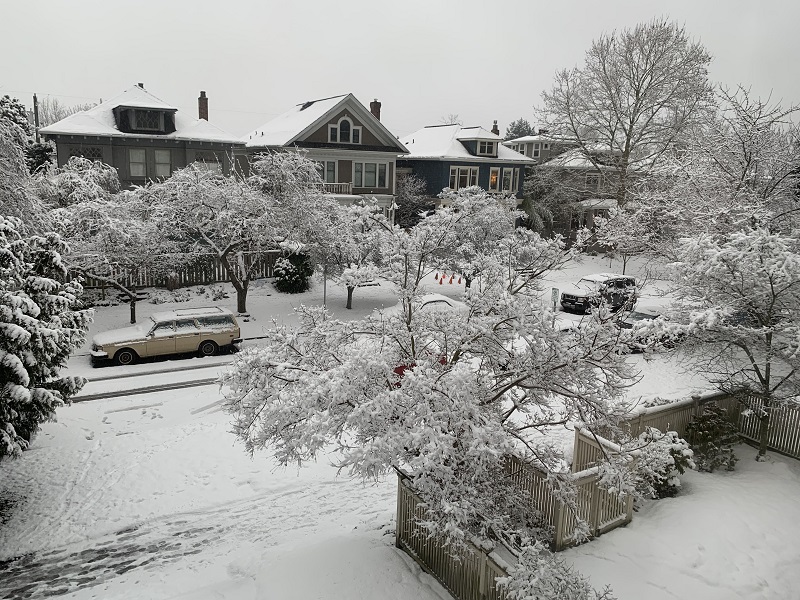
The sun was out, with clear blue skies on Tuesday. We got above freezing by a few degrees: enough to start melting the snow.
There is another system on the way that will bring more snow on Friday, though!
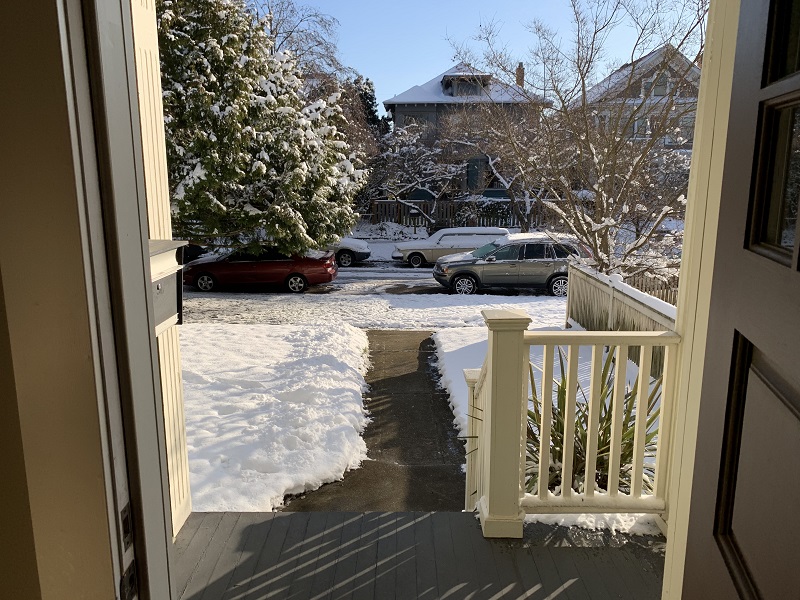
The snow kept sifting down through Sunday night, and by noon today, there was 4 inches of snow on the ground at my house.
North of the city, some places recorded 12 or 13 inches of snow.
It was cold today! Even the day temperatures only got to 29 °F/ -2°C.
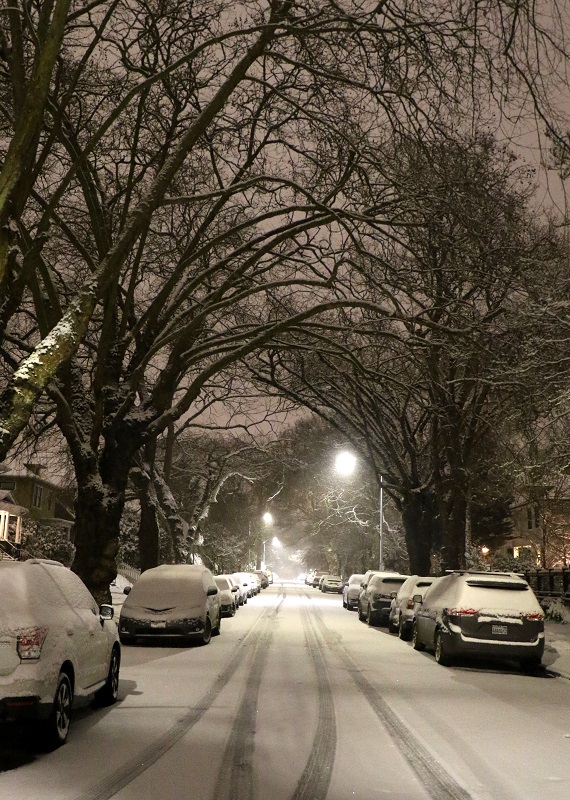
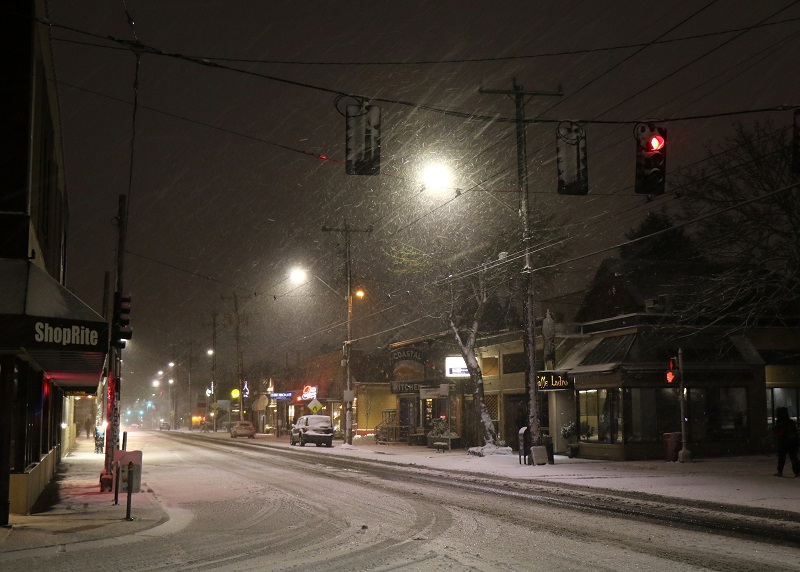
It’s February of 2019, and the cold in the Midwest is easing.
We’re about to get a spell of cold weather on Sunday and into Monday here in Seattle. We might even see snow on the ground in the city. It’s a good time of year to be a creature with a floofy, fluffy coat!

 And I don’t know what breed of cat it is.
And I don’t know what breed of cat it is.The polar vortex is pushing down into the Midwest of the continental United States, and will bring the frigidest temperatures in 20 years, to many locations.
Meteorologists had to debunk Trump’s idiotic tweet from Monday, in which he ‘called’ on global warming to ‘Please come back fast, we need you’.
As NASA explains in a Climate for Kids video, weather is only temporary, while climate describes the typical weather conditions in an entire region for a very long time – 30 years or more.
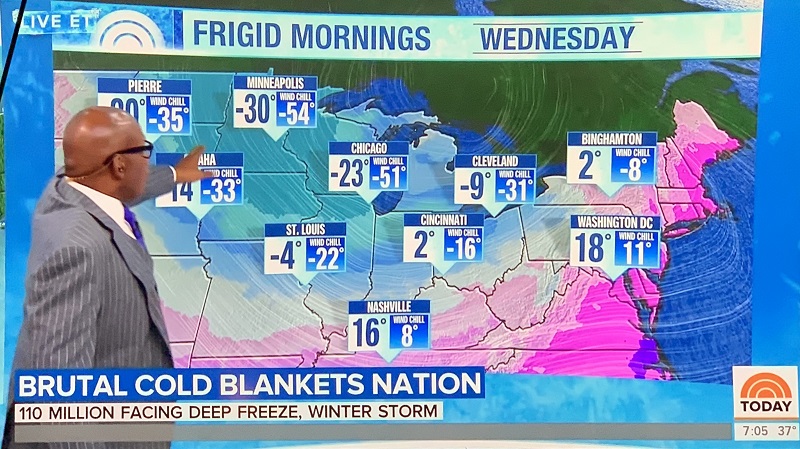
Sigh* .. at least Trump visited California (on Saturday), and saw the devastation firsthand. He seemed to get along swimmingly with the new Governor-elect of California, Gavin Newsom. This after he had been pretty rude to him in Tweets in the past. (Gossip: Could it be because Newsom’s ex-wife Kimberly Guilfoyle now dates Trump’s oldest son, Donald Trump Jr.?).
*Trump felt the need to repeat his ‘assessment’ of California’s forest management: ‘In Finland they rake the forest floors’. (This baffles the Finns, and prompted a denial from the Finnish president that he had ever told Trump that). Then Trump got the devastated town’s name wrong, calling Paradise ‘Pleasure’, instead. When he did it a second time, FEMA administrator Brock Long (and Governor Jerry Brown) could no longer stand it and corrected him loudly.
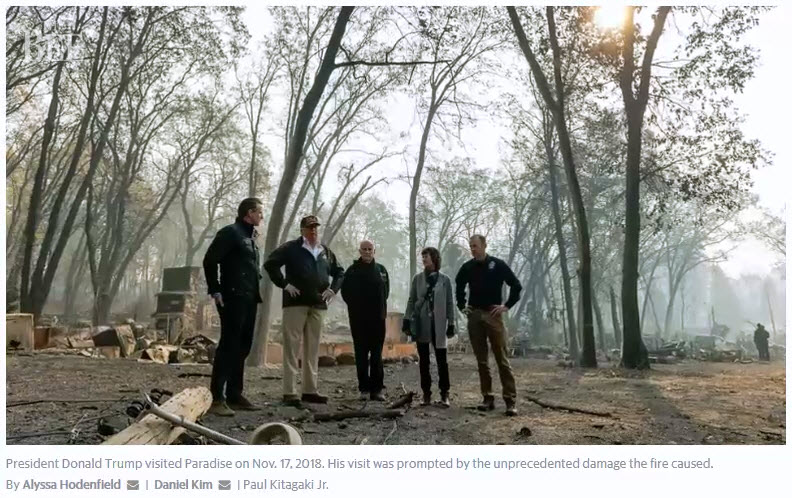
Cape Town’s dam levels hit the 70% mark on Monday for the first time since 2015. The severe water restrictions that had been in place, have been relaxed, albeit just by a little*. The rainy season is coming to an end in September, and a long dry summer lies ahead.
*The City is asking residents to use no more than 70 liters (18.5 US gal) per person per day, up from a 50-liter (13 US gal) limit.
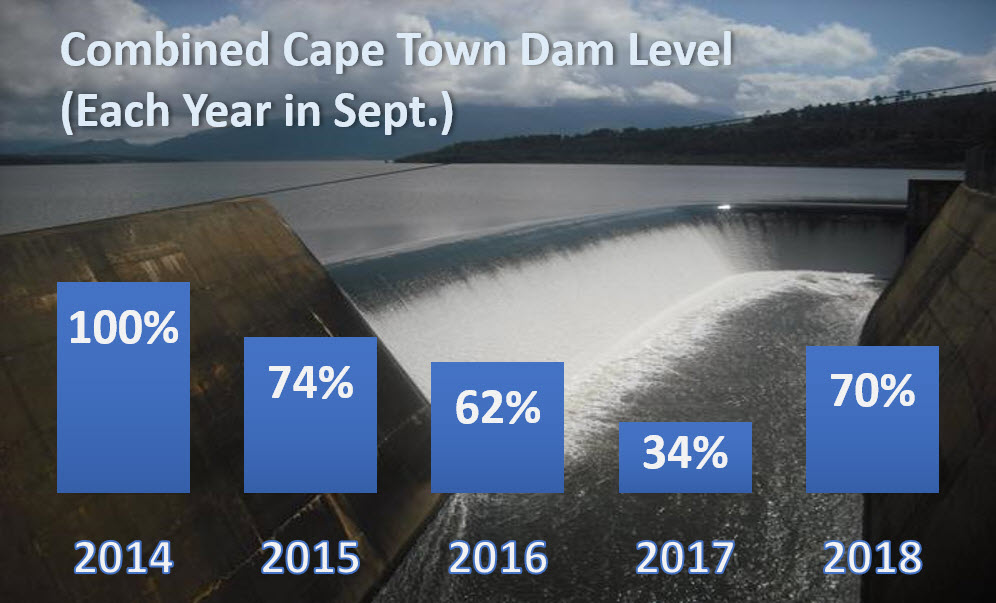
Thu 11.00 pm EDT: Florence has not made landfall yet (50 miles from the coast) .. now a Category 2, so the storm’s wind speeds have come down, but there will still be a lot of water to deal with*. Up to a third of the people in some communities have elected to stay put, in spite of the evacuation order. Time will tell if that was wise. (Some people had no place to go, or no means to evacuate, though).
*4.9 million people live in areas that will get more than 10 inches of rain over the next 5 days.
Fri 11.00 pm EDT: Florence made landfall near Wrightsville Beach, North Carolina at 7:15 AM EDT on Friday. By late afternoon, several hundred people had been rescued, and 5 deaths directly related to the storm, had been reported. Many of the streams and rivers in the storm’s footprint are expected to crest at record levels downstream.
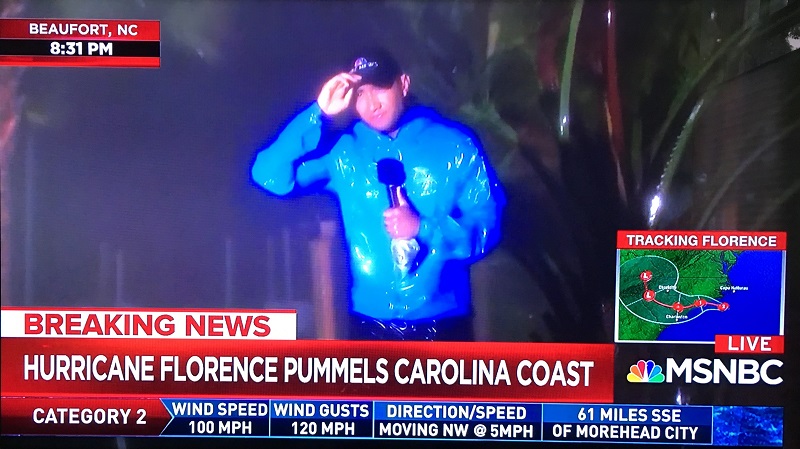
‘Let us withdraw, ’twill be a storm’. – William Shakespeare tweet this morning (from King Lear, Act 2, Scene 4)
We’re all on Florence watch here, even the West coasters. (Hurricanes do not hit the West Coast, due to the direction of global winds, and the Pacific Ocean’s water temperature). Hurricane Florence is bearing down on North Carolina. The latest models show that it might rake the coastline after coming close to the mainland, resulting in a 9-13 ft storm surge from the ocean. This, combined with upwards of 30 inches of rain in some areas will make for wide-spread flooding of low-lying areas. Some of the long narrow barrier islands off the coast will be run over completely with seawater. About 1 million people along the coast are under mandatory evacuation orders.
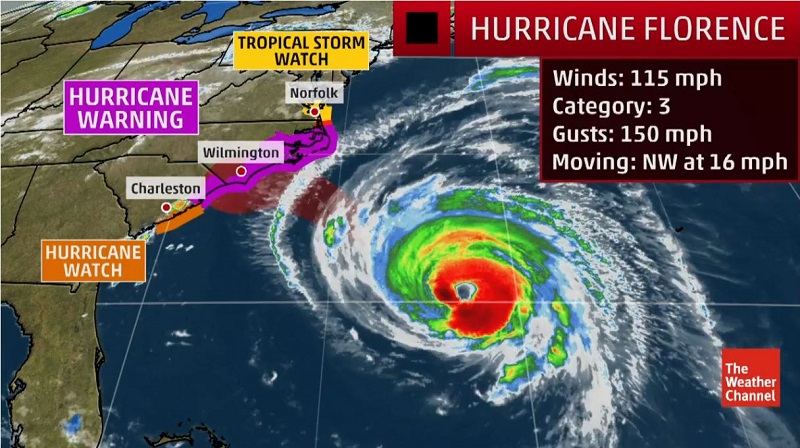
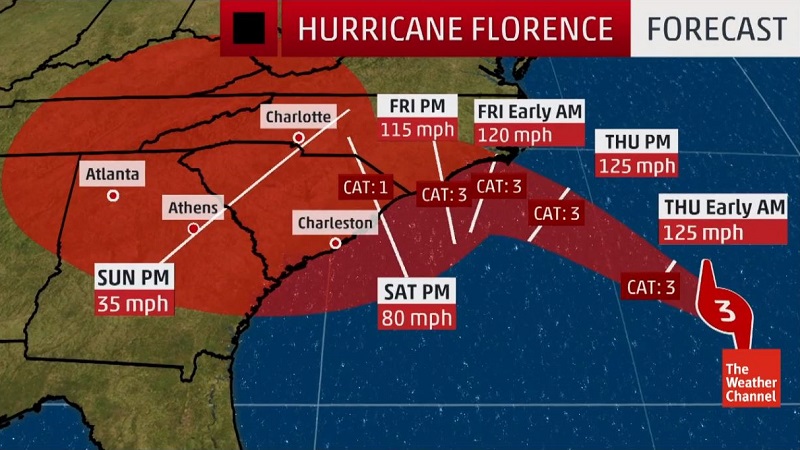
The smoky, unhealthy air that had blanketed the city since Sunday night, finally cleared up today.
There was a sprinkle of rain this morning, but I watered the garden later on in the day, as well.

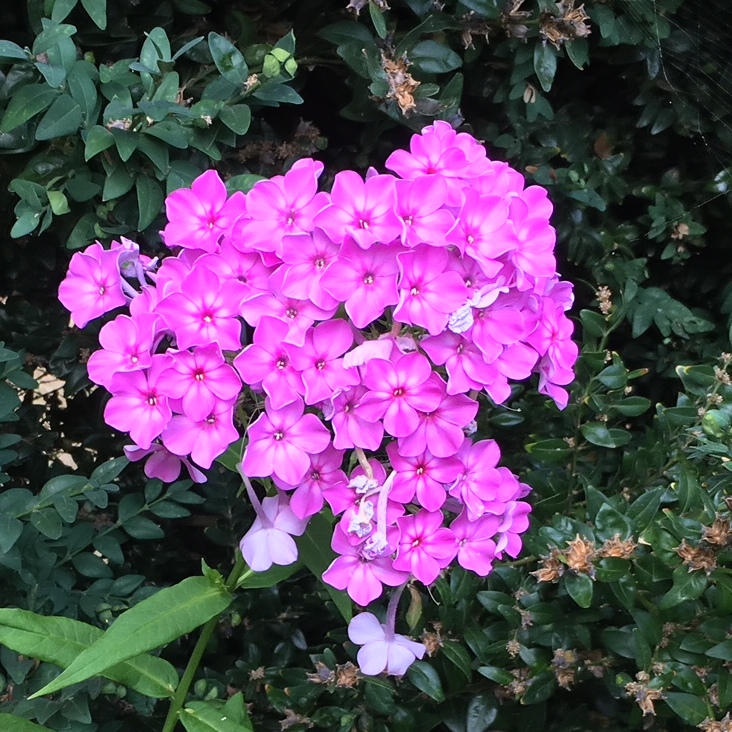
Mister Blue Sky please tell us why
You had to hide away for so long (so long)
Where did we go wrong?
– Lyrics from ‘Mr. Blue Sky’ (1977), by Electric Light Orchestra
The air quality for today (and expected for tomorrow), for the Puget Sound region, is pretty much the worst on record*. Winds from the north and from the east have carried vast plumes of smoke and PM2.5 particles from the raging wildfires in Canada and Eastern Washington, to the region.
*An air quality value of 218 is reported tonight in my neck of the woods, which is in the ‘Very Unhealthy’ category.
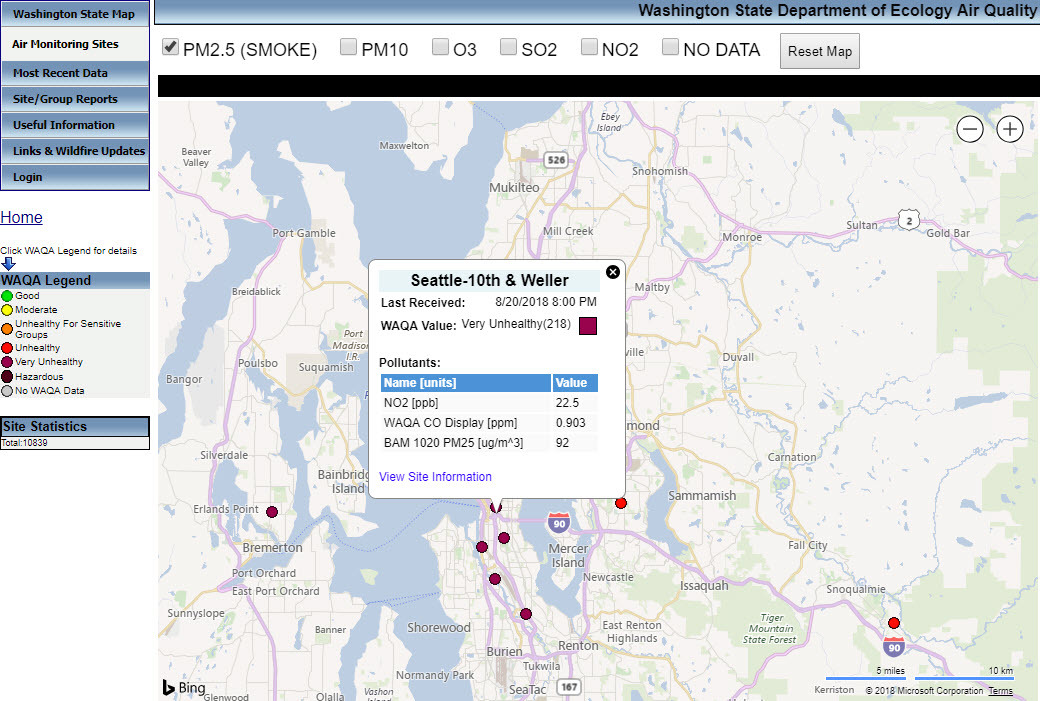
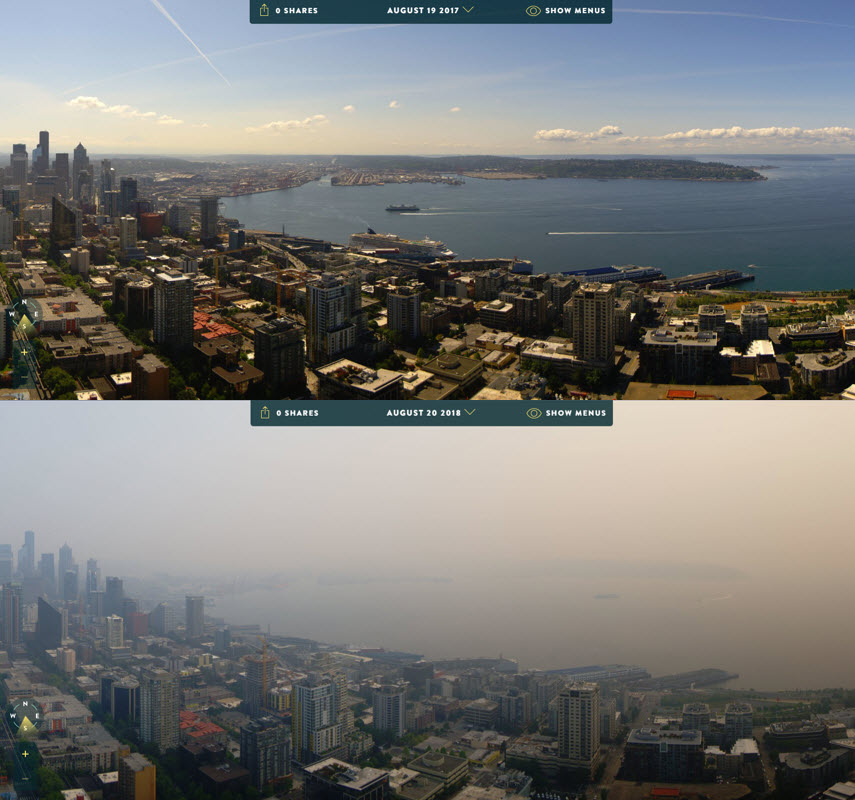
I wanted to know where the phrase ‘the dog days of summer’ comes from – and if there is a date range associated with it. Well, it is a reference to the star system Sirius, and yes, there is a date range related to it.

